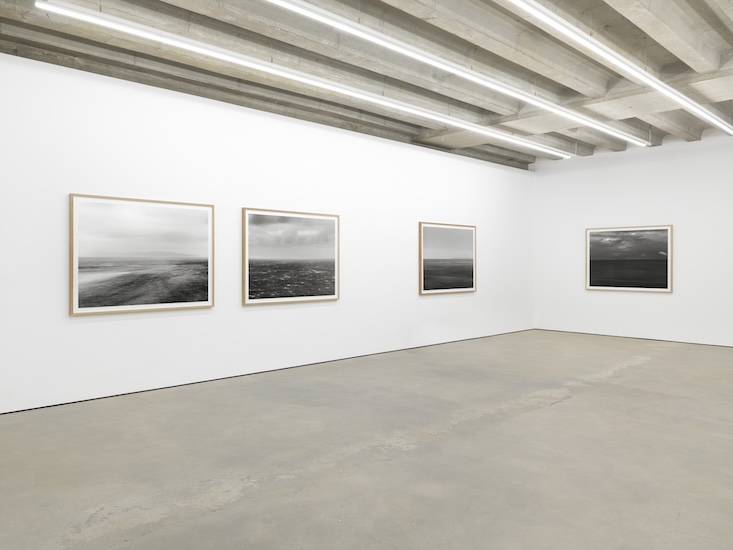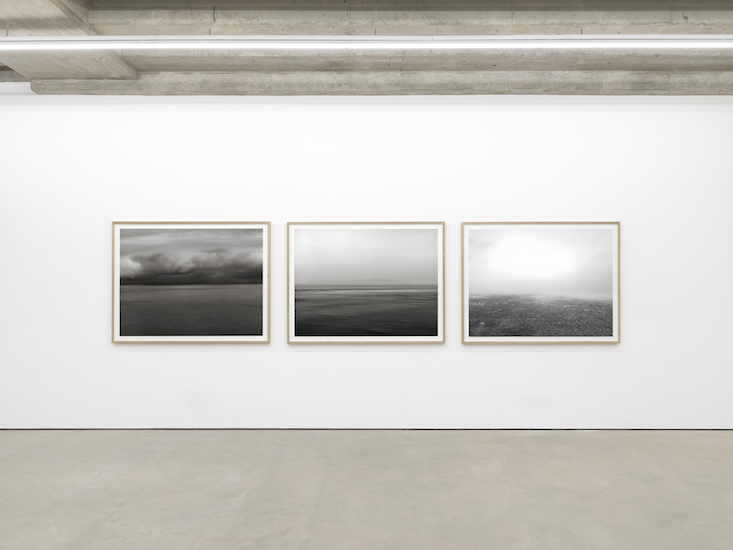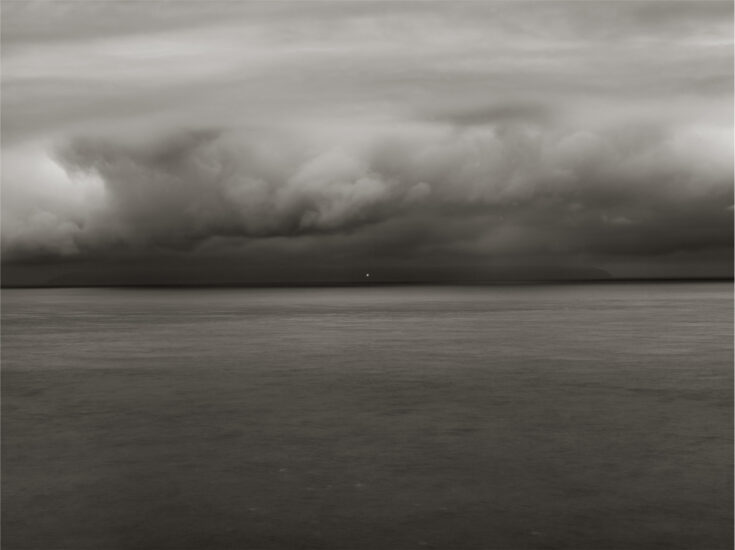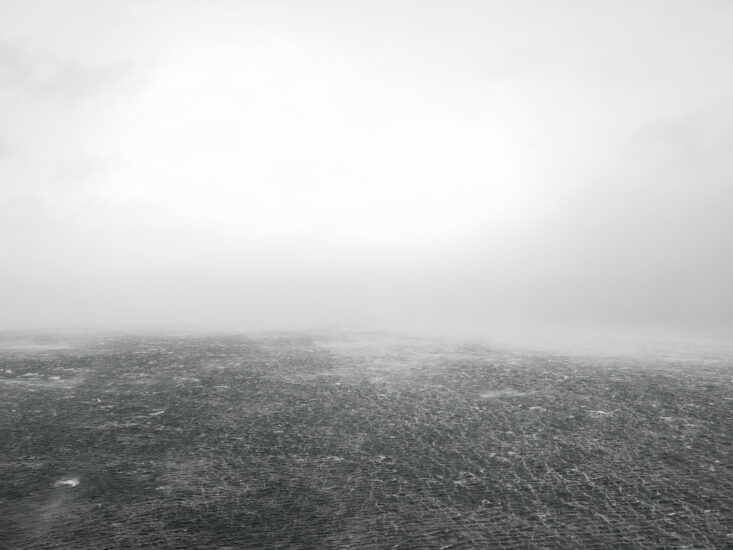Ames Yavuz presents Lighthouse, a solo exhibition by Donovan Wylie. The body of work on view comprises long-exposure photographs of distant lighthouses, visible only by their points of light within vast seascapes; representing both barriers and invitations, closeness and distance.
As in his earlier work, Wylie approaches Lighthouse through a process of “surrendering” to the subject. The neutralisation of authorial subjectivity continues Wylie’s long-standing “systematic approach” as an image-making practice, first seen in his work Maze (2004), in which the contingencies and contextual vagaries of his subject-matter dictate the form and format of the work.
The project began in the wake of the June 2016 referendum on the United Kingdom’s withdrawal from the European Union. Since then, Wylie has photographed the light emitted from lighthouses from across the borders and coastlines of Great Britain, Northern Ireland and France. These photographs were made on specific dates marking events of political, legal or ecological significance. The result of the photographic process in Lighthouse is “an unknowable image” for Wylie, “carved only by the movement of the sea, and the contingencies of light and time”.






